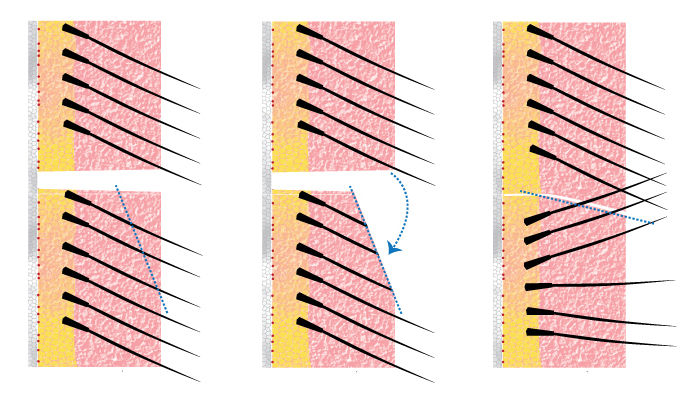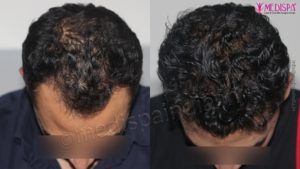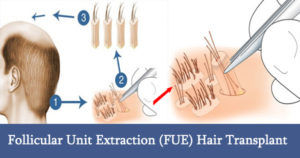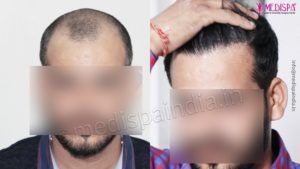What is the Trichophytic Closure?
When a hair transplant surgeon meticulously closes the wounded incision, the hair transplant patient expects for a practically invisible scar. However, the surgeon has the aim to consider the advanced method of the wound closure; they generally end up with a fine linear scar that is about 1-2 mm in width. In some instances, the scars are very wide, when the patient’s connective tissue is weak, or edges of the scar are closed too roughly or have too much tension, the scar can be a cosmetic problem after the wound incision in the hair transplant procedure.
To deal with the scar problem, the Trichophytic closure is an innovative and advanced practice in the hair transplant procedure. The Trichophytic closure makes the possibility of better camouflaged of the linear donor scar and thus leaves the practically invisible scar.
The Trichophytic closure is a way to minimize the visibility of the donor area scar by following the advanced method of the closure. It makes the scarring undetectable as the regrowth starts from the edges of the incision. The Trichophytic closure is an innovative method to close the incision areas, which is widely accepted in the hair transplant procedure. The Trichophytic closure is allowed to those patients who have previously received a wrong hair transplant and affected by the scarring issue. However, the Trichophytic closure is allowed to improve the camouflage of a linear donor scar.

Trichophytic Closure
As far as the FUT technique is concerned, the FUT hair transplant method must adhere to the scarless suturing process that is achieved through the advanced method of the Trichophytic closure in the hair restoration.
Does It improve the Hair Transplant Scar, if Yes How?
Yes, absolutely! The Trichophytic closure perfectly hides the donor area scar by following the advanced method of the wound closure in which edges of the incision allow the regrowth of hair just through the wounded scar and therefore, it is all possible to achieve the practically imperceptible scars.
One can achieve the most invisible linear donor scar in the FUT technique by receiving the Trichophytic closure, which is performed in such a manner that the closure follows the overlapping pattern. The one side of the edges of the incision perfectly overlap to the other side of the wound edges and thus allow a pattern which is perfectly closed with the regrowth of hair possibility.
The Trichophytic closure in the wound incision applies in such a manner that the upper edges of the incision trimmed off very well and the closing of the wound is performed in such a fashion the hair near the edges can grow through the wounded scar. However, the Trichophytic closure has the potential to make the donor scar that is virtually undetectable.
The FUT Hair Transplant & the Trichophytic Closure:
The FUT method of the hair transplant surgery involves the strip of the skin excision from the safe donor part followed by the simple incision and sutures. This method applies a normal surgical process and thus the incision is closed by the suturing technique that may or may not give the scars. However, a modern technique/method is applied to sort out the problem of the scars in the procedure, which is known as the Trichophytic closure. The Trichophytic closure is allowed to hide the incision scars and made it practically imperceptible. This is the advanced closing technique that is done in such a manner that the regrowth of hair can be possible just from the edges of the incision. It is a notable factor in the strip method of the surgery that the possibility of a scarless result can be quite possible with the Trichophytic closure. Nonetheless, the hair transplant cost is lesser for the strip method, whereas it is comparatively high for the FUE hair transplant.
The Procedure of Trichophytic Closure:
First of all, it must be noted that the Trichophytic closure applies to the FUT method of the hair transplant in which strip of the skin is harvested from the safe donor part of the scalp, i.e., the back and sides of the scalp. The harvested areas involve simple incision as the linear strip is taken out from the safe donor part and thus it is necessary to make a longitudinal cut that further closed by the suture. And, this suture must be an advanced method, which is Trichophytic that allows the surgeon to meet the scarless results of the surgery.
In order to perform the Trichophytic closures, the edges of the wound incision are trimmed off perfectly and then closing the wound area in such a manner that the hair growth could be possible just through the wounded scars. Therefore, the Trichophytic closure makes the possibility of getting practically imperceptible scars.
Why is it better?
- It gives practically invisible results that make the linear donor area a scarless
- It is widely accepted in the hair restoration technique and definitely an innovative way to perform the procedure with a scarless result
- It gives the best scarless result and defines a new way to perform the FUT technique
- It is a safe way to perform the procedure that helps in achieving the desirable goal of the surgery
- The Trichophytic closure makes the possibility of regrowth of hair through the wounded scars and thus allows the scar practically undetectable, which end up with the utmost scarless results.
At Medispa, Dr Suneet Soni is well-versed in performing the advanced FUT method followed by the Trichophytic closure and has more than a decade experience in the field of hair restoration surgery. One can get the benefits of the utmost modern technology and equipment at Medispa clinic that are all available at an affordable cost with the assurance of getting quality treatment in Jaipur and New Delhi.
So, it is the best considerable aspect while receiving the procedure that what technique is adopted by the surgeon and how they are reaching the goal of the surgery. Thus, the role of the Trichophytic closure has a prime place in defining the success of the procedure.






